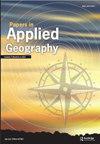Mapping of Solar Energy Potential in the West Bank, Palestine Using Geographic Information Systems
Q2 Social Sciences
引用次数: 3
Abstract
Abstract Palestine currently suffers a serious shortage in crucial energy supplies. Nearly 90% of electricity needs come directly from Israel, or through Palestinian electricity distribution companies. This situation puts the Palestinian population under continuous pressure, mainly due to the current unstable political situation in the region. The Palestinians have started to explore local alternatives to reduce the impact of Israeli control of this vital sector. Palestine receives about 3,000 hours of sunshine every year, making up an average of 8.2 hours daily, which makes it suitable for investing in solar energy. In this research land-use/land-cover data and a Digital Elevation Model (DEM) are used in a GIS environment while employing land-use/land-cover criteria and topography to produce a site suitability map for harnessing solar energy. The results of the study show that the eastern and southern parts of the West Bank are the most suitable areas for this purpose. The study also finds that the suitable areas for solar energy investment remain under full control of the Israeli Authorities. These areas are categorized as “Area C” according to the Oslo Interim Agreement signed by Israel and the Palestinian Liberation Organization (PLO). This means that the Palestinians need to obtain permission from Israel to work in these areas. Putting an end to the Palestinian- Israeli conflict according to the United Nations resolutions may remove the imposed restrictions to invest efficiently in the solar energy sector.利用地理信息系统绘制巴勒斯坦西岸太阳能潜力图
巴勒斯坦目前在关键能源供应方面严重短缺。近90%的电力需求直接来自以色列,或者通过巴勒斯坦的电力分配公司。这一局势使巴勒斯坦人民持续受到压力,主要是由于该地区目前不稳定的政治局势。巴勒斯坦人已开始探索当地的替代办法,以减少以色列控制这一重要地区的影响。巴勒斯坦每年的日照时间约为3000小时,平均每天8.2小时,适合投资太阳能。在这项研究中,利用土地利用/土地覆盖数据和数字高程模型(DEM)在GIS环境中使用,同时利用土地利用/土地覆盖标准和地形来制作利用太阳能的场地适宜性地图。研究结果表明,西岸东部和南部是最适合用于这一目的的地区。该研究还发现,适合进行太阳能投资的地区仍然完全由以色列当局控制。根据以色列和巴勒斯坦解放组织(巴解组织)签署的《奥斯陆临时协定》,这些地区被归类为“C区”。这意味着巴勒斯坦人需要获得以色列的许可才能在这些地区工作。根据联合国决议结束巴以冲突可能会消除对有效投资于太阳能部门的强加限制。
本文章由计算机程序翻译,如有差异,请以英文原文为准。
求助全文
约1分钟内获得全文
求助全文

 求助内容:
求助内容: 应助结果提醒方式:
应助结果提醒方式:


